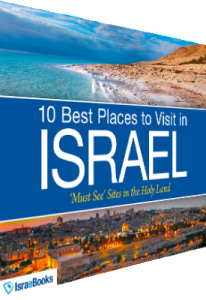
With the current US push for a peace agreement between Israel and the Palestinian Authority, there has been much discussion in past weeks on the strategic importance of the Jordan Valley and the future of the Jewish communities there. Thus United with Israel has chosen the Jordan Valley as this week’s featured place.
David Elhayani, head of the Jordan Valley Regional Council, was among the pioneers of the region, which was liberated in the 1967 Six Day War and became a thriving agricultural center notwithstanding the seeming unsuitability of the land to growing crops.
The Jordan Valley is roughly 120 km. long and 15 km. wide, extending from Beit She’an in the north to the Dead Sea.
“When the first settlement began, it was desert. There was nothing here,” he told a group of journalists on a trip to the region with MediaCentral, an independent, Jerusalem-based media liaison organization.
The area under his jurisdiction includes a Jewish population of 7,000 and encompasses 21 communities, all “located in strategic points,” Elhayani said.
The idea to settle the region began in 1967, and “it took us more than 20 years to learn which main crops would grow here.”
Jordan Valley produce includes, for example, fresh peppers, grapes and herbs, but the region is most famous for its delicious Madjoul dates, which are the “best in Israel,” Elhayani affirmed. These high-quality products are largely exported to many countries worldwide.
“The Jordan Valley is an Israeli success story…on our land,” he declared.
When the first settlers to the region arrived in the late 1960s and early 1970s, “it was very difficult,” he explained, adding that the Israeli government had encouraged permanent settlement under Israeli sovereignty, albeit with a warning that it “would not be easy.” Summers are long and hot, with temperatures averaging 45-50 degrees Celsius, and the land is not naturally conducive to agriculture.
“No community would come thinking they might have to leave in a few years,” Elhayani said.
About 6,000 Palestinians are employed there daily. It’s a “quiet area,” and relations with the neighboring Arabs are “more than good.”
In fact, Elhayani and his wife recently attended the wedding celebration of an employee in a nearby village, but since the men and women were separated, as per Muslim custom, they could not sit together.
“I was alone with the men and my wife was with the women, and we felt safe,” he said.
“We employ 6,000 Palestinians,” Elhayani declared, and most of them believe that the Palestinian Authority is “corrupt.”
“When they have problems with electricity, they call me [not the PA],” he continued. “The general population doesn’t care about a Palestinian state. They want to go to a show in Tel Aviv and visit their family in Rahat [southern Israel] and go to the Golan Heights.”
Elhayani is not opposed in principle to the establishment of a Palestinian state, “but not without the Jordan Valley [under Israeli sovereignty]” and “not within the 1967 borders.”
He stressed the issue of security, citing, for example, Maj. Gen. Nitzan Allon, head of the Central Command, whose professional opinion is that the area is strategically vital to Israel and must be under Israeli sovereignty.
“After 45 years, it’s time we talked about it,” Elhayani said.
Israeli farmer Inon Rosenblum, also in his fifties, settled there in 1982; he, too, described the adventure of developing a new area in Israel – with the encouragement of the Israeli government – and the success they eventually met after years of working on “lousy soil” of “stone and clay.”
Rosenblum lives on Moshav Na’ama, which is famous for its herbs.
“You don’t see any [army] bases or blockades here,” he said. “It’s a quiet area…. I personally employ 20-40 Palestinians each day,” depending on the season.
According to Elhayani, “100 percent of the [Israeli] people living here oppose withdrawal from the Jordan Valley. There are 7,000 Jewish people living in the Jordan Valley, but we’re talking about 100,000 Jews all over the West Bank that would have to leave. Look what happened after Gaza,” he said, pointing out that close to 10,000 Jews were forced out of their communities and many still haven’t found work.
“What would the government do with us? I’m 53. Should I rebuild my life?”
With the passing of legendary warrior Ariel Sharon – who, as prime minister, evacuated the Jewish communities of Gaza in 2005 – many were reminded of the thriving agricultural communities that were destroyed when Israel unilaterally withdrew from Gaza; since then, missiles fired from Hamas have been raining down on southern Israel. There were many similarities between the Jewish communities of Gaza and the Jordan Valley, where farmers met outstanding success notwithstanding poor agricultural conditions.
By Atara Beck, Senior Writer, United with Israel

Free Ebook: 10 Best Places to Visit in Israel
The Land of Israel has provided the backdrop for some of the most important events in human history. From the Old City in Jerusalem to the Sea of Galilee, people from all over the globe visit the Holy Land each year to take in the breathtaking scenery and inspiration of Israel. Now you can experience this beauty for yourself from the comforts of home and maybe plan a trip of your own to Israel. Get the free, exclusive eBook from United with Israel: The 10 Best Places to Visit in Israel.